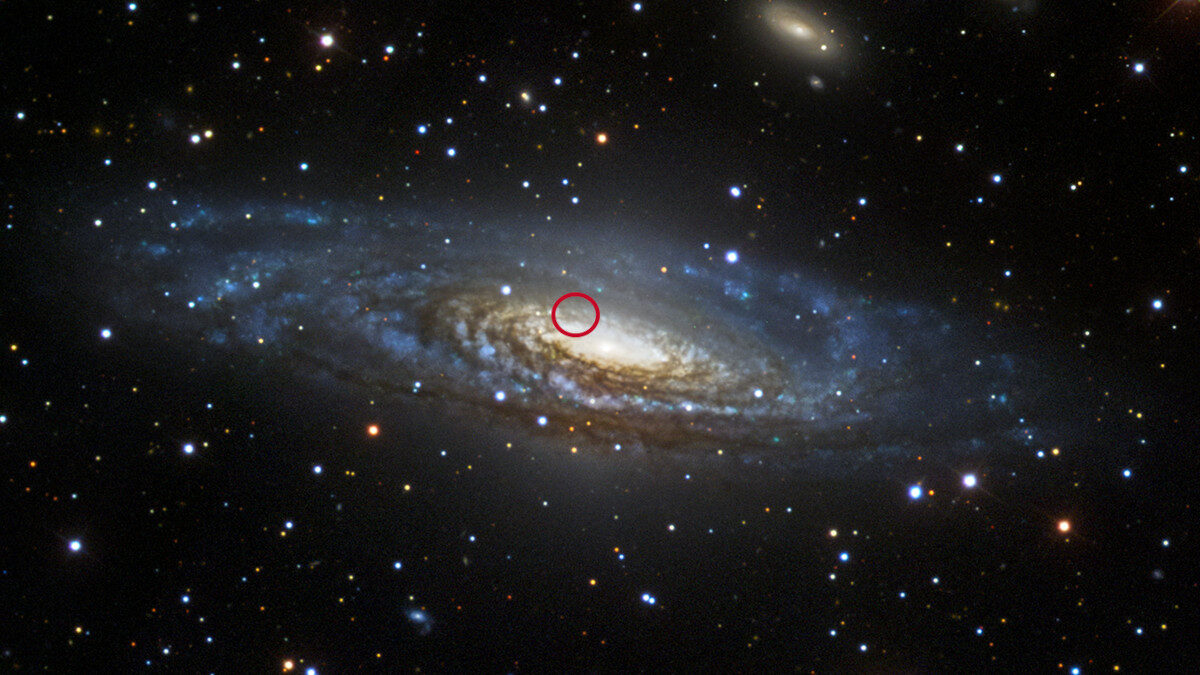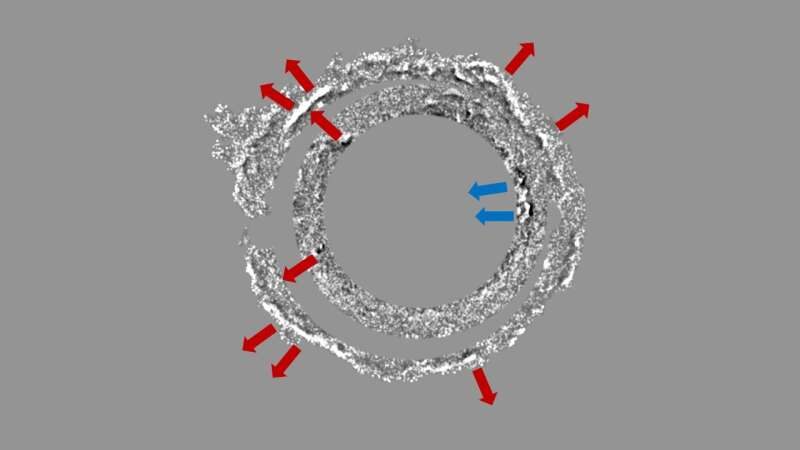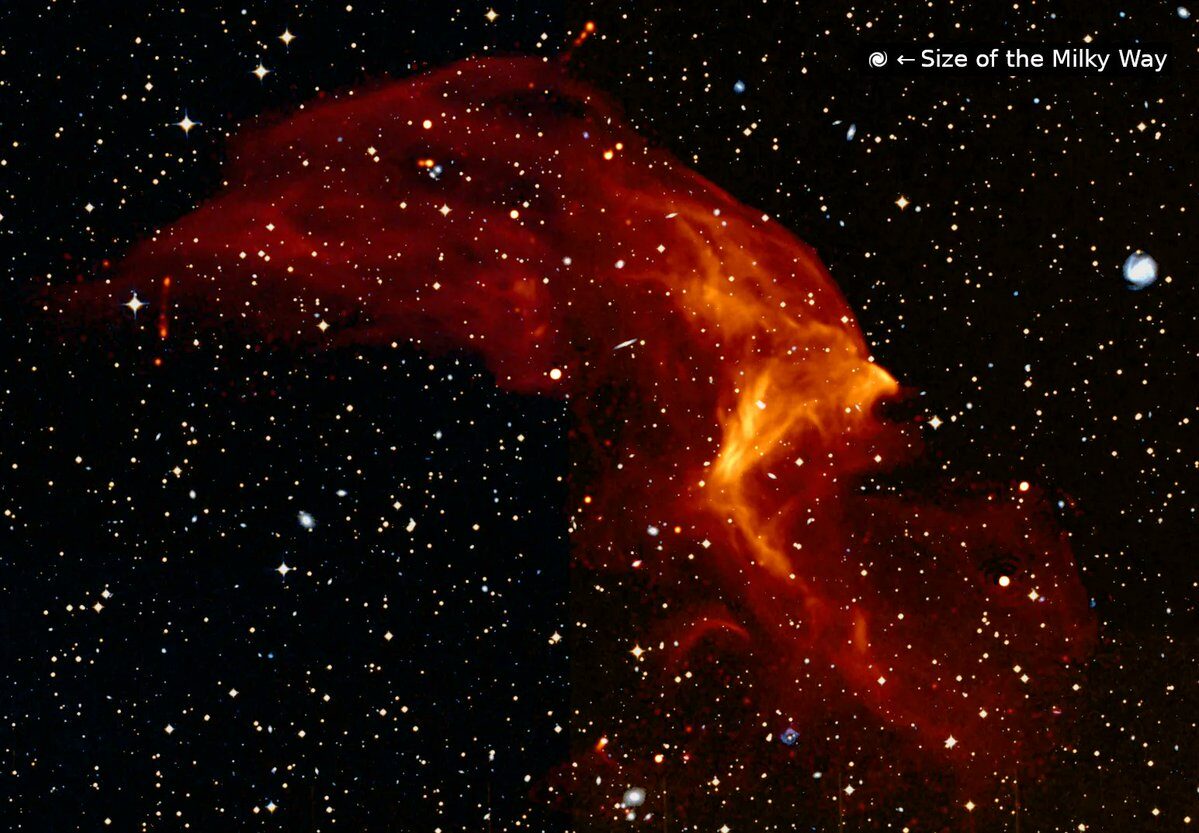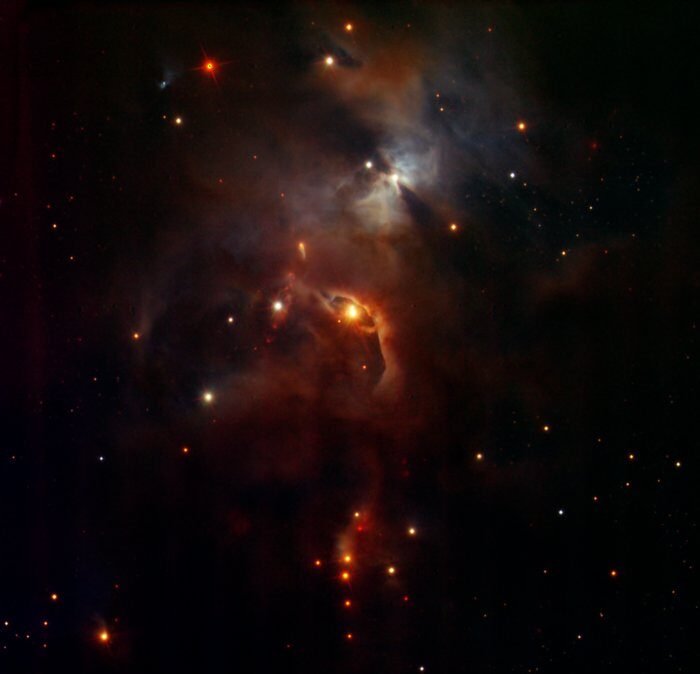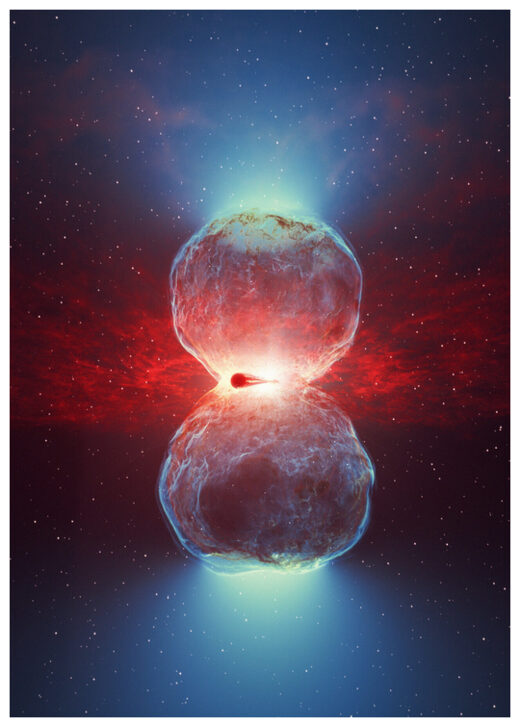
© DESY / H.E.S.S., Science Communication LabExplosion in space: Artist's impression of the white dwarf and red giant binary system following the outburst of a nova like RS Ophiuchi. Material ejected from the surface of the white dwarf generates shockwaves that rapidly expand, forming an hour-glass shape. Particles are accelerated at these shock fronts, which collide with the dense wind of the red giant star to produce very-high-energy gamma-ray photons.
With the H.E.S.S. observatory and the Fermi satellite, researchers track the eruption of RS Ophiuchi.
For the first time, it has been possible to observe the outburst of a nova in very high-energy gamma light and to follow the glow and subsequent fading over a period of one month. The researchers combined the data from the H.E.S.S. observatory with those from the Fermi satellite and gained insights into the processes underlying the emission of gamma rays. The scientists were surprised to find that the nova apparently accelerates particles to the theoretical limit.
In the constellation of Ophiuchus (the Serpent Bearer) there is a double star system called "RS Ophiuchi", about 7500 light years away, consisting of a white dwarf and a red giant. Their separation is only about one and a half times the distance between the Earth and the Sun, close enough for the white dwarf to continuously pull matter from the atmosphere of its companion.
Episodically, enough material is accumulated on the white dwarf's surface for the strong gravity to ignite a thermonuclear explosion. Between 1898 and 2006, astronomers have previously observed eight such nova outbursts of RS Ophiuchi. On the of August 8, 2021, another outburst occurred that was visible even to the naked eye.
Starting the following night, H.E.S.S. set its sights on the star and was indeed able to detect it. "This is the very first observation of a nova in very-high-energy gamma radiation," says Alison Mitchell of the Friedrich-Alexander-Universität Erlangen-Nürnberg and principal investigator of the H.E.S.S Nova programme. For an unprecedented period of one month - with a brief period of interruption around full moon - H.E.S.S. was able to track the evolving luminosity of the nova.
Complementing the H.E.S.S. observations were lower-energy gamma-ray measurements by the Fermi satellite. Combining data from the two instruments revealed unique insights into the processes underlying the gamma-ray emission and their evolution. In both energy ranges, the rate of gamma-rays received by the instruments displays a period of steady increase before decaying at the same rate.
